Abstract
Four pigeons responded under autoshaping contingencies in which different conditional stimuli (red or green keylights) were associated with unconditional stimuli of different magnitudes (large or small food pellets) over successive trials within a session. Both topography (beak opening or gape) and strength (rates and latencies of key pecks and gapes) of responding during the conditional stimuli depended on the magnitude of the correlated unconditional stimulus. Key-peck and gape rates were higher and latencies were shorter in large-pellet trials than in small-pellet trials. Gape amplitudes varied directly with pellet size, although conditional and unconditional gapes were larger than either pellet. These findings were replicated when the key colors were presented either on one or two keys and after reversals of the color-size correlations. Because the unconditional stimulus was varied through pellet size, magnitude was not confounded with food-access duration or quality. These results demonstrate the effects of the magnitude of the unconditional stimulus, in that rates and latencies of both key pecks (which are directed movements toward the key) and gapes (which are independent of the bird's position and key properties) varied with pellet size. Gape measures were unique in that two dimensions (response strength and topography) of a single response class varied simultaneously with magnitude.
Full text
PDF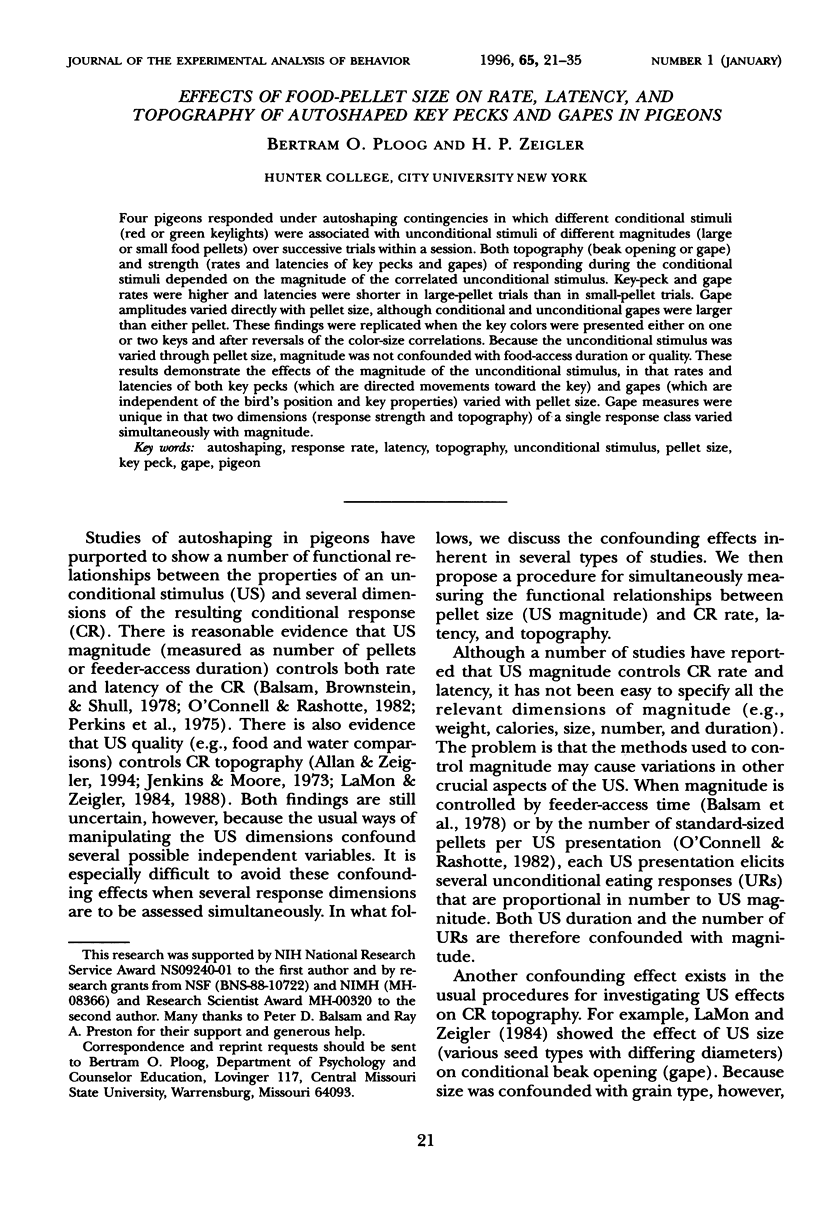
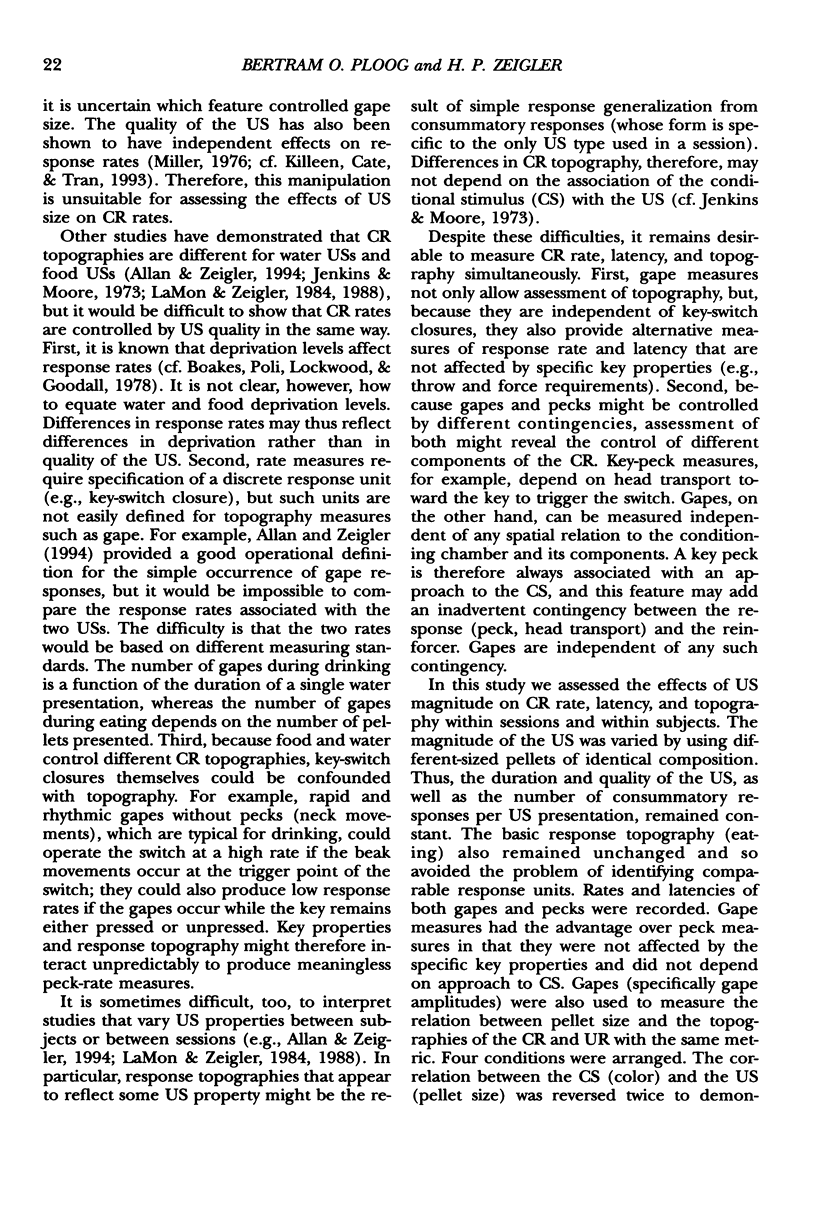


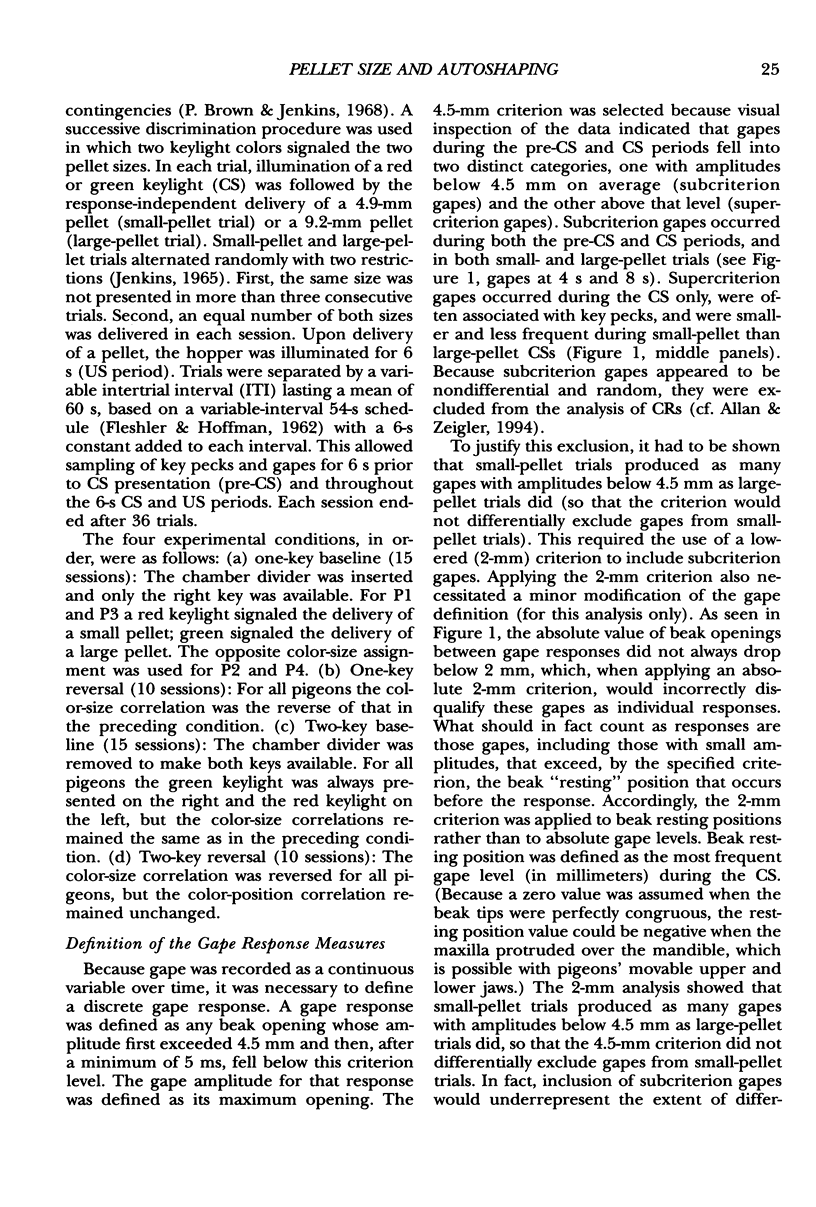
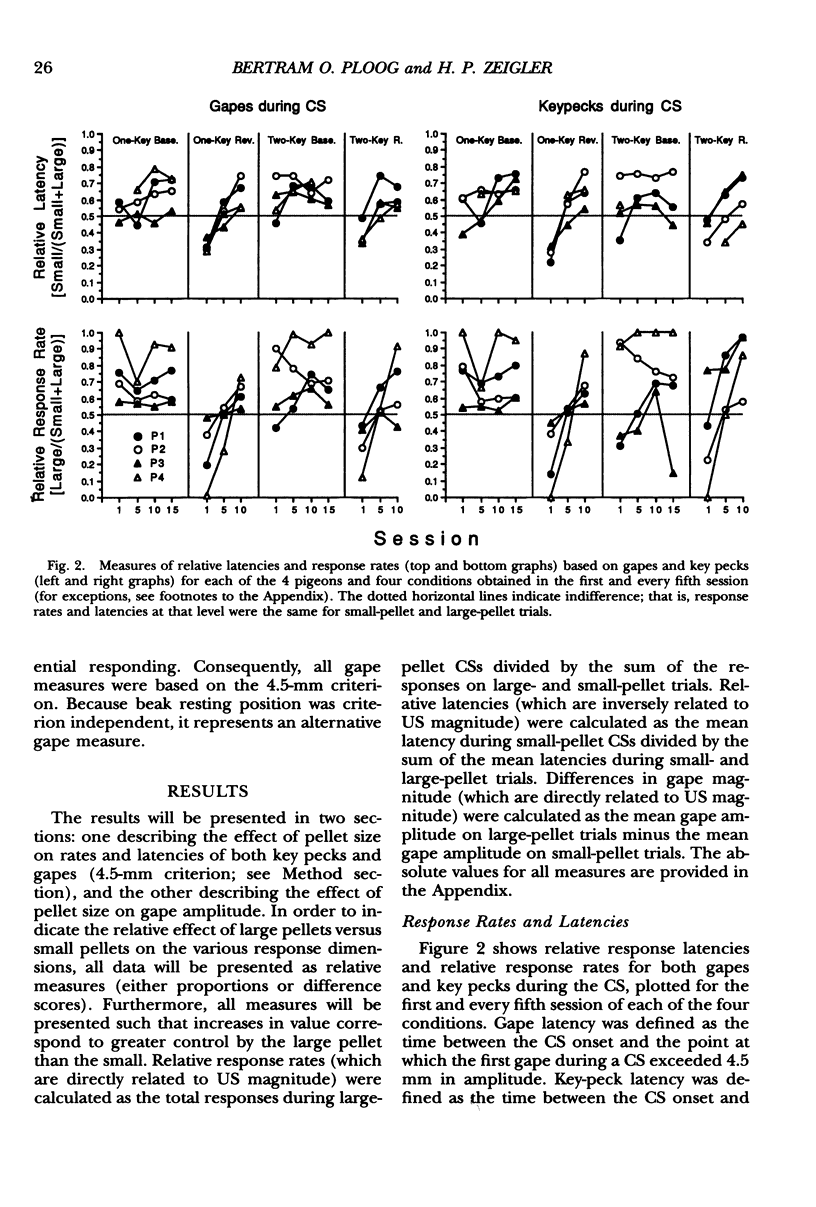
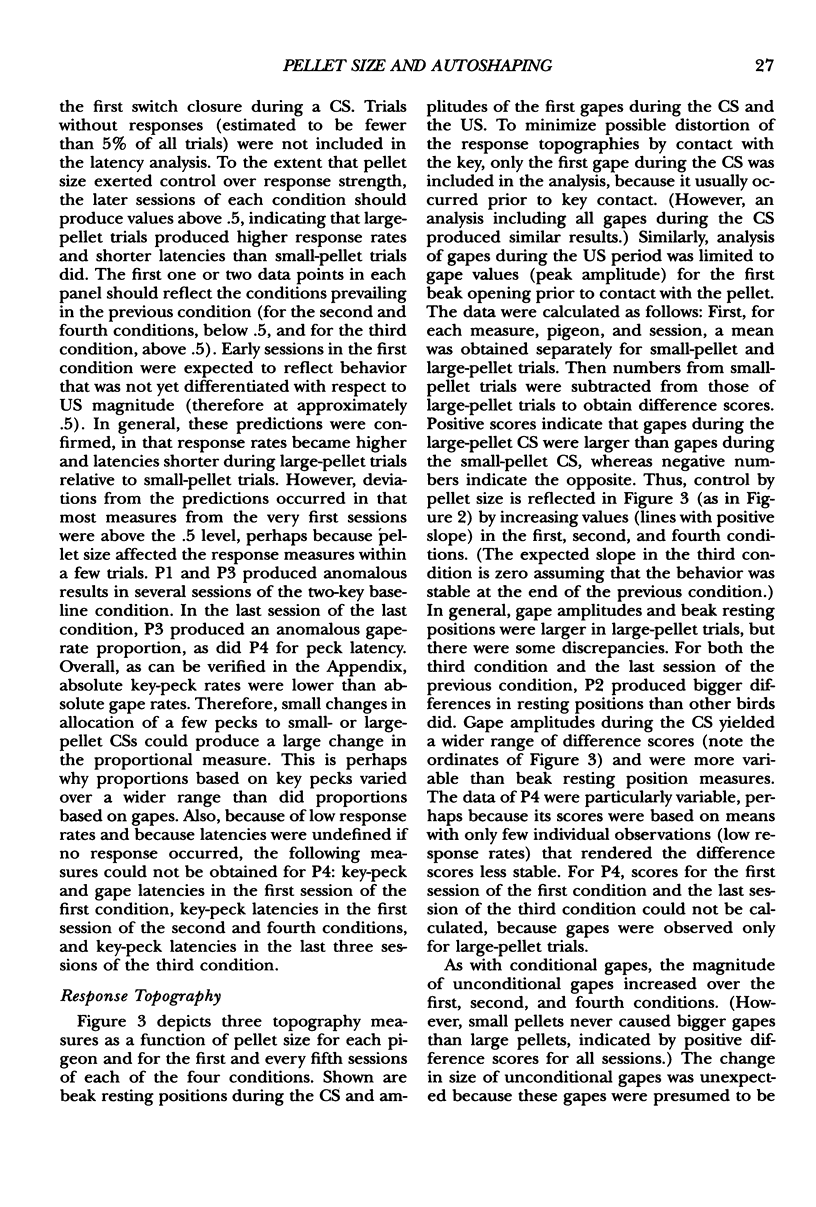


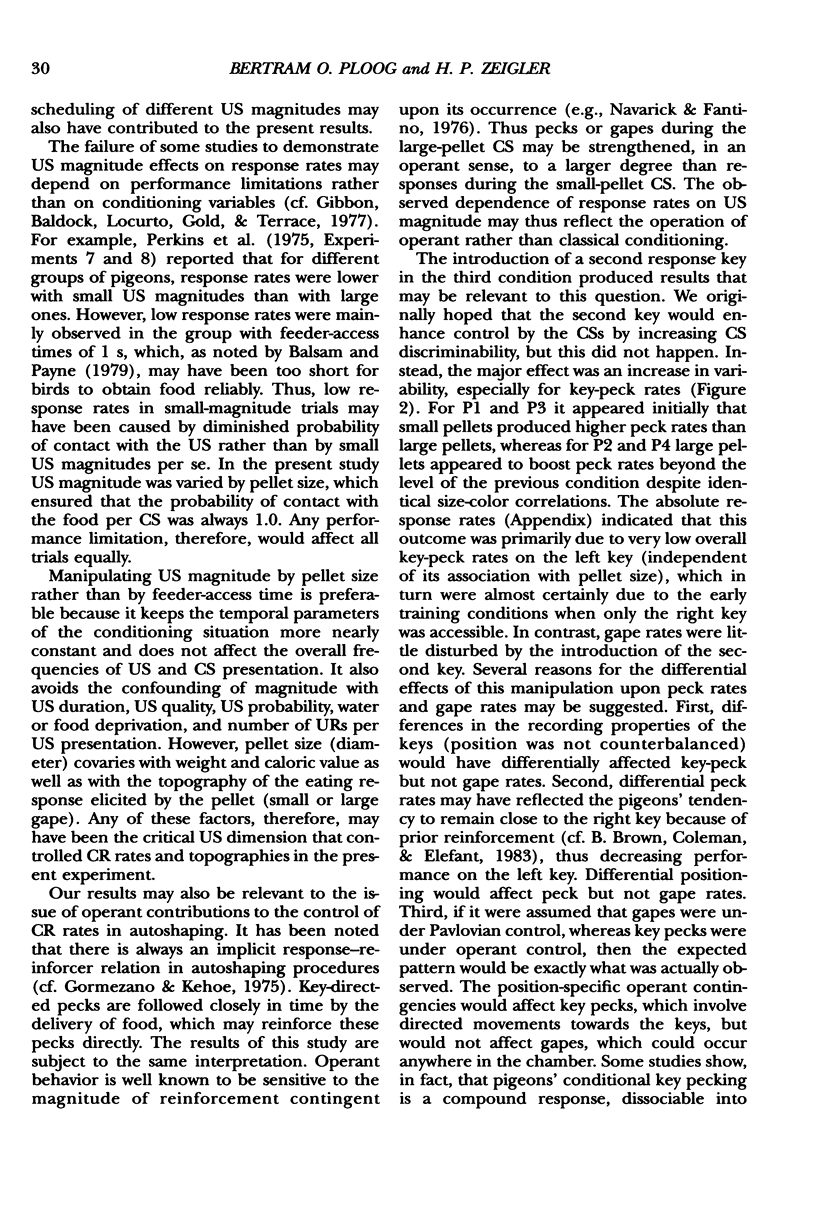

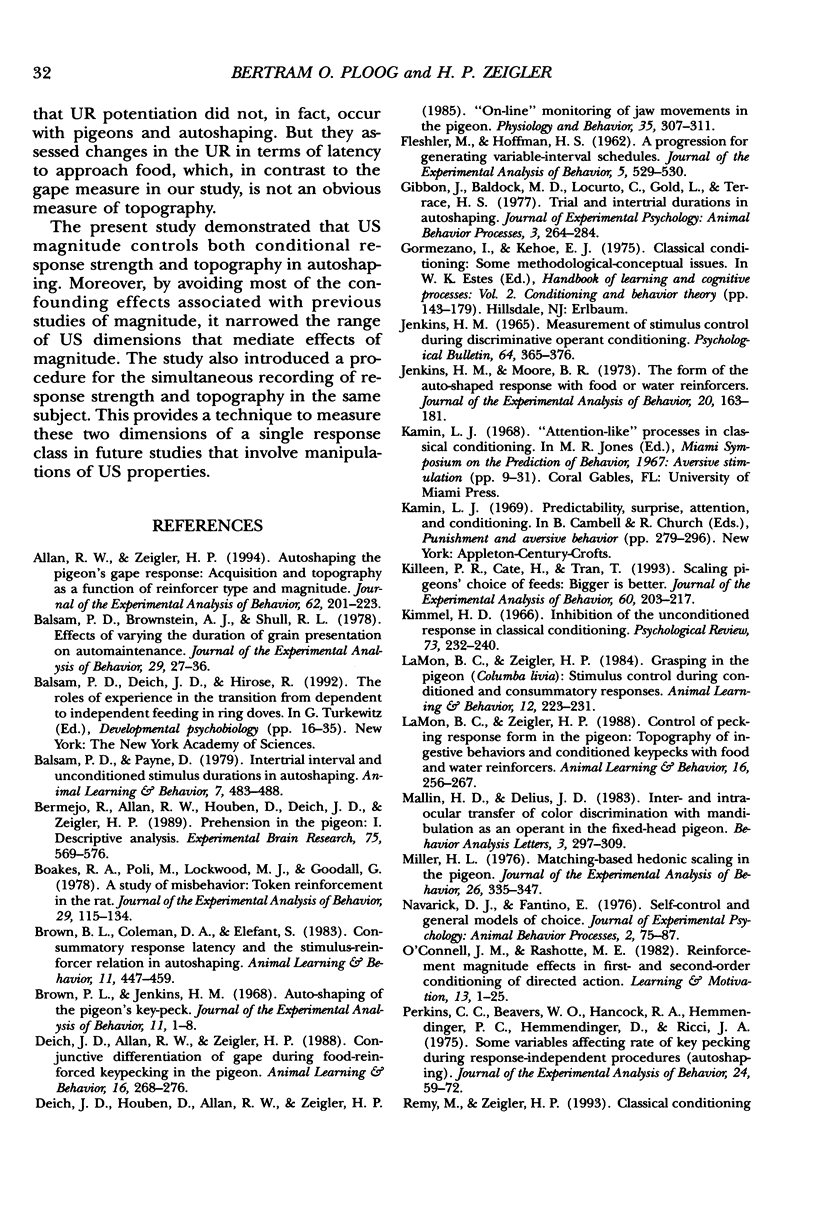
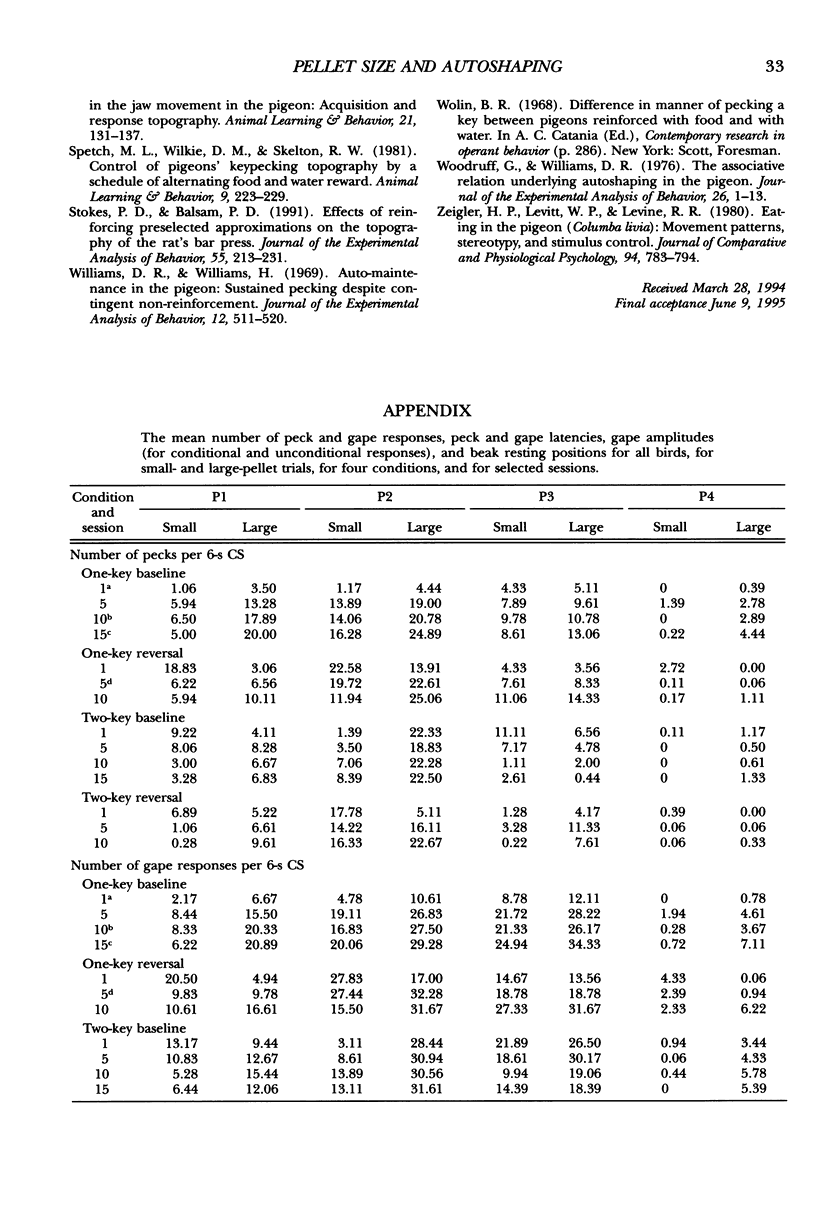

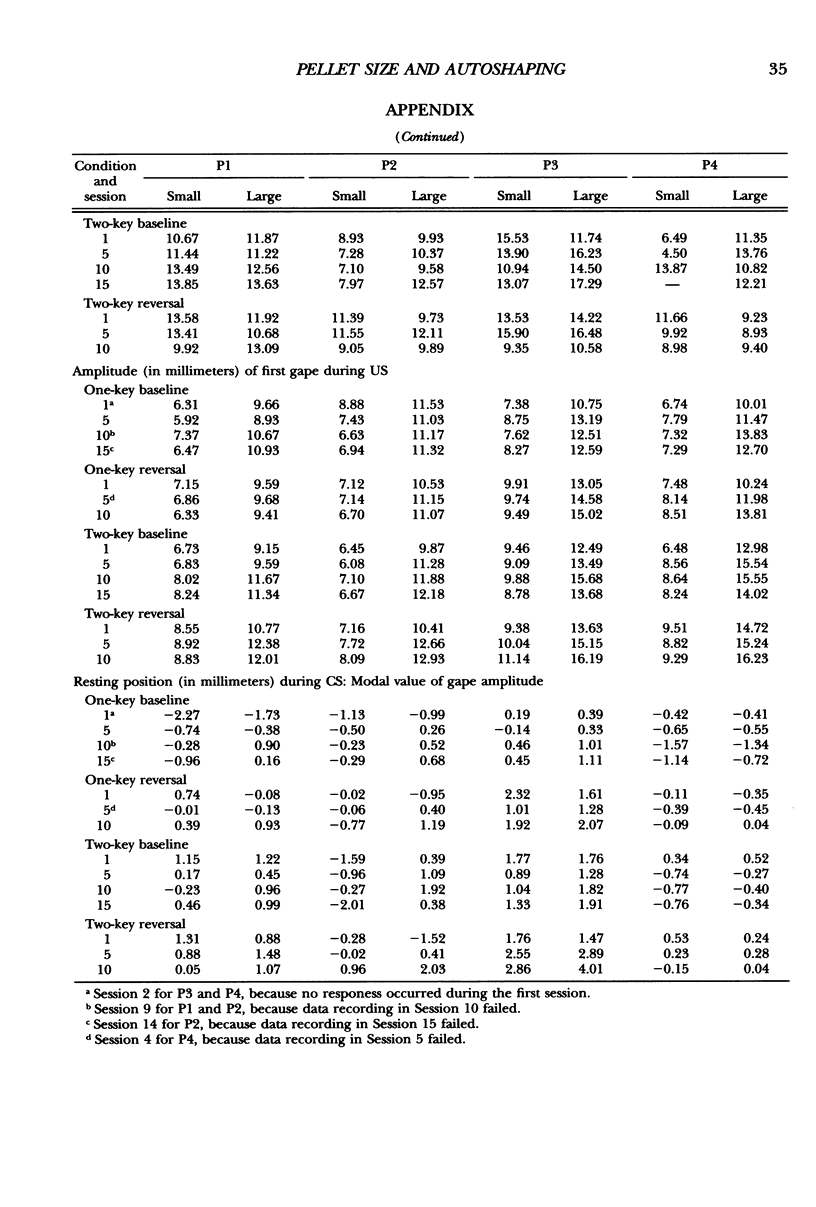
Selected References
These references are in PubMed. This may not be the complete list of references from this article.
- Allan R. W., Zeigler H. P. Autoshaping the pigeon's gape response: acquisition and topography as a function of reinforcer type and magnitude. J Exp Anal Behav. 1994 Sep;62(2):201–223. doi: 10.1901/jeab.1994.62-201. [DOI] [PMC free article] [PubMed] [Google Scholar]
- Balsam P. D., Brownstein A. J., Shull R. L. Effect of varying the duration of grain presentation on automaintenance. J Exp Anal Behav. 1978 Jan;29(1):27–36. doi: 10.1901/jeab.1978.29-27. [DOI] [PMC free article] [PubMed] [Google Scholar]
- Bermejo R., Allan R. W., Houben A. D., Deich J. D., Zeigler H. P. Prehension in the pigeon. I. Descriptive analysis. Exp Brain Res. 1989;75(3):569–576. doi: 10.1007/BF00249908. [DOI] [PubMed] [Google Scholar]
- Boakes R. A., Poli M., Lockwood M. J., Goodall G. A study of misbehavior: token reinforcement in the rat. J Exp Anal Behav. 1978 Jan;29(1):115–134. doi: 10.1901/jeab.1978.29-115. [DOI] [PMC free article] [PubMed] [Google Scholar]
- Brown P. L., Jenkins H. M. Auto-shaping of the pigeon's key-peck. J Exp Anal Behav. 1968 Jan;11(1):1–8. doi: 10.1901/jeab.1968.11-1. [DOI] [PMC free article] [PubMed] [Google Scholar]
- Deich J. D., Houben D., Allan R. W., Zeigler H. P. "On-line" monitoring of jaw movements in the pigeon. Physiol Behav. 1985 Aug;35(2):307–311. doi: 10.1016/0031-9384(85)90354-3. [DOI] [PubMed] [Google Scholar]
- FLESHLER M., HOFFMAN H. S. A progression for generating variable-interval schedules. J Exp Anal Behav. 1962 Oct;5:529–530. doi: 10.1901/jeab.1962.5-529. [DOI] [PMC free article] [PubMed] [Google Scholar]
- Jenkins H. M. Measurement of stimulus control during discriminative operant conditioning. Psychol Bull. 1965 Nov;64(5):365–376. doi: 10.1037/h0022537. [DOI] [PubMed] [Google Scholar]
- Jenkins H. M., Moore B. R. The form of the auto-shaped response with food or water reinforcers. J Exp Anal Behav. 1973 Sep;20(2):163–181. doi: 10.1901/jeab.1973.20-163. [DOI] [PMC free article] [PubMed] [Google Scholar]
- Killeen P. R., Cate H., Tran T. Scaling pigeons' choice of feeds: bigger is better. J Exp Anal Behav. 1993 Jul;60(1):203–217. doi: 10.1901/jeab.1993.60-203. [DOI] [PMC free article] [PubMed] [Google Scholar]
- Kimmel H. D. Inhibition of the unconditioned response in classical conditioning. Psychol Rev. 1966 May;73(3):232–240. doi: 10.1037/h0023270. [DOI] [PubMed] [Google Scholar]
- Miller H. L. Matching-based hedonic scaling in the pigeon. J Exp Anal Behav. 1976 Nov;26(3):335–347. doi: 10.1901/jeab.1976.26-335. [DOI] [PMC free article] [PubMed] [Google Scholar]
- Perkins C. C., Beavers W. O., Hancock R. A., Hemmendinger P. C., Hemmendinger D., Ricci J. A. Some variables affecting rate of key pecking during response-independent procedures (autoshaping). J Exp Anal Behav. 1975 Jul;24(1):59–72. doi: 10.1901/jeab.1975.24-59. [DOI] [PMC free article] [PubMed] [Google Scholar]
- Stokes P. D., Balsam P. D. Effects of reinforcing preselected approximations on the topography of the rat's bar press. J Exp Anal Behav. 1991 Mar;55(2):213–231. doi: 10.1901/jeab.1991.55-213. [DOI] [PMC free article] [PubMed] [Google Scholar]
- Williams D. R., Williams H. Auto-maintenance in the pigeon: sustained pecking despite contingent non-reinforcement. J Exp Anal Behav. 1969 Jul;12(4):511–520. doi: 10.1901/jeab.1969.12-511. [DOI] [PMC free article] [PubMed] [Google Scholar]
- Woodruff G., Williams D. R. The associative relation underlying autoshaping in the pigeon. J Exp Anal Behav. 1976 Jul;26(1):1–13. doi: 10.1901/jeab.1976.26-1. [DOI] [PMC free article] [PubMed] [Google Scholar]


